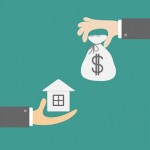
The After Repair Value (or ARV) of a property is a critical number for real estate investors, as it helps determine the difference between the as-is price of the home and the value of the property after repairs. Understanding this calculation means understanding whether or not there’s enough margin for the flip to be profitable.
Understanding AVR
The first step in determining the ARV is to look at comparable properties. These should be similar properties within the immediate area that are either currently for sale or have recently sold, and will give some insight into what the property could sell for in the current market.
There are a few ways that savvy investors can research and find comparable properties:
- Gain access to the Multiple Listing Service (MLS) to search and view properties on your own
- Partner with a real estate agent or broker that can give you access to the MLS
- Use online resources that are available to the public —such as LoopNet, realtor.com® and others
And, when searching for comparable properties, try to find the following:
- Properties sold in the last 2-4 months
- Properties that are similar in size, age and amenities/upgrades
- Properties that are in the same neighborhood, or are close by
Factoring Repairs and Renovations
Once comparable properties have been found and an estimated value (after repair) can be placed on the property, it’s time to calculate the cost of repairs. Depending on the investor’s level of expertise, they can 1) come up with these estimates on their own or 2) receive detailed estimates from experienced contractors.
But, there are more expenses to flipping a property than just the repairs and renovations. There are additional costs such as closing costs, financing costs, holding costs, and (if the property is a flip) the cost of marketing and selling the property. These too need to be factored in.
The 70% Rule
Many real estate flippers abide by the 70% rule, which —using the ARV and the estimated repair costs— helps you determine the price you should pay for the property. Here’s a basic example:
The ARV of your subject property is $200,000. Seventy percent of the ARV ($200,000 x .70) is $140,000. You subtract your estimated repair costs (let’s say $30,000), and so you shouldn’t be paying more than $110,000 for the property. ($140,000 - $30,000)
Of course the 70% Rule is just a general guideline, and market conditions, special features of the property and more can all play a role. You should always trust your instincts when evaluating properties.
Making Flipping Funding Available
Ready to tackle your next fix and flip, but need access to funding? Check out the options available to real estate flippers and investors on Patch of Land today.




Jose Araujo commented July 9, 2020
Great source of info.